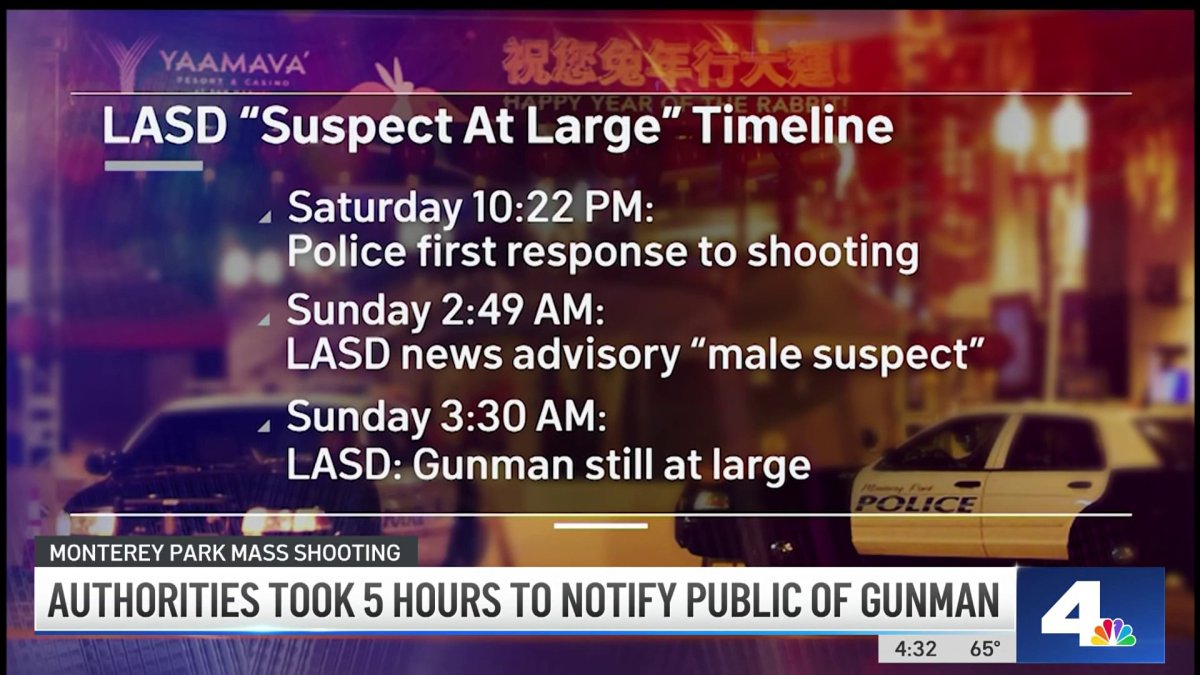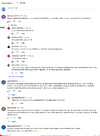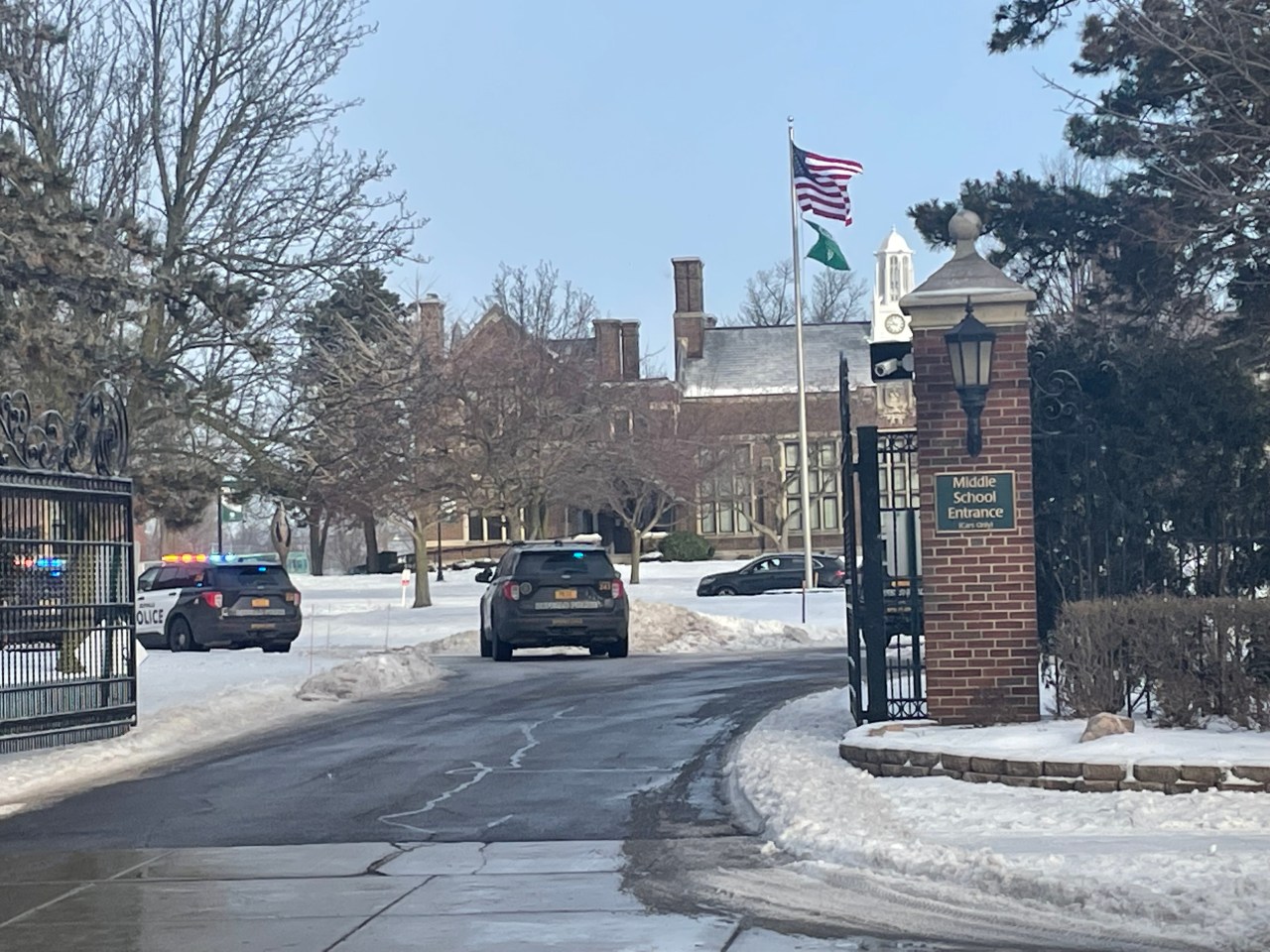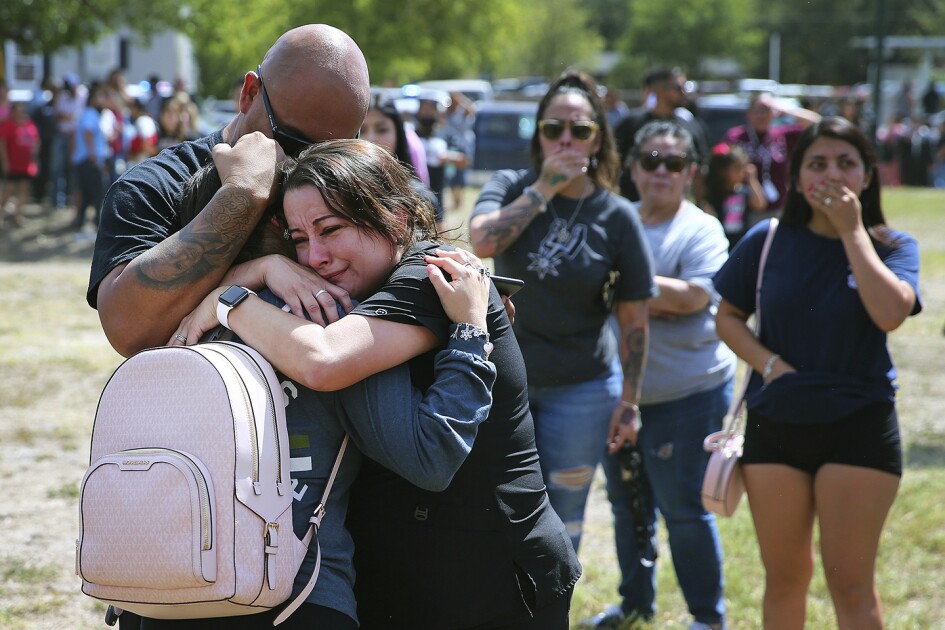I agree with the sessions that this was a global distraction.
Surveillance footage shows the hero confronting the suspected gunman
CNN Hmmm
Surveillance footage shows the hero confronting the suspected gunman
CNN Hmmm

 www.nbclosangeles.com
www.nbclosangeles.com







Lakeland, Fla. — Ten people were wounded during a drive-by shooting in a central Florida neighborhood, police said.
Lakeland Police Chief Sam Taylor said during a news conference that two of the victims were critically wounded Monday afternoon, while the wounds of the other eight victims weren't considered life-threatening. The victims were males between the ages of 20 and 35.
A manhunt for the shooters was continuing Tuesday.
CBS Orlando affiliate WKMG-TV reports that Taylor said a school bus had just dropped off children at the location of the shooting a minute before the shots rang out.
A crowd of people was gathered along a residential street when a dark-blue sedan with tinted windows and a temporary tag rolled by, slowing but not stopping, police said. Four people fired shots from the sedan's four windows before the car sped away, Taylor said.
Officers were searching for the vehicle and the shooters Monday night, officials said.
Taylor said investigators believe the shooting was a targeted attack.
Police said marijuana was found at the scene of the shooting and investigators believe drug sales were taking place.
Taylor described the neighborhood as "challenged" and said the police had focused a lot of attention on the area in recent years.
Lakeland is located about 30 miles east of Tampa.
"This is something that doesn't happen in Lakeland," he remarked at the news conference. "I've been here 33 years and I can tell you I have never worked an event where this many people have been shot at one time. Ever," Taylor said.
"It actually saddens me to some extent that we consider ourselves to be a small town situated between Tampa and Orlando, and when stuff like this happens, it just kind of hits home with me a little bit that maybe we're not a small town anymore. It actually is pretty sad," he added.


Angeles Rodriguez was hit and killed by a suspected drunk driver while on the corner of Imperial Highway and Main Street on Jan. 22.


The shooting occurred on the morning of Dec. 1. 2017. Samayo, a rookie who was on his fourth day on the job, and his training officer were among those who responded to a report of a robbery and carjacking on the 1800 block of 23rd Street.
A California Lottery white minivan was carjacked outside a corner store at 23rd and Arkansas Street. The woman driving the lottery vehicle was assaulted and suffered non-life-threatening injuries.
Another vehicle described as a gold SUV was seen in the area and police believe was involved in the carjacking. The two vehicles were seen traveling together in the Bayview district and police stopped the older model GMC Yukon SUV at the corner of Ingalls and Gilman where four occupants were detained.
The lottery van continued and was chased into a dead-end corner of Fitzgerald Ave. and Griffith St., outside the Alice Griffith housing complex.
Samayoa, who was in the passenger seat of a patrol car that was pursuing O'Neil in the stolen van, had his gun out and was aiming at O'Neil before the patrol car came to a halt, body camera footage released by the Police Department showed.
As O'Neil ran past the officer's patrol car, Samayoa fired at him from inside the vehicle, shattering the glass. He then fired at an unarmed O'Neil through the car's window, striking him once.
The bullet struck O'Neil just above the collarbone on the right side. He was transported to San Francisco General Hospital, where he was pronounced dead.
"Mr. O'Neil had no weapons, he was unarmed," Boudin said. "Body camera footage from other officers shows that not a single other officer pulled out their service weapon or pointed it at Mr. O'Neil. As a result of Officer Samayoa's terrible, tragic and unlawful decision that day...Mr. O'Neil was killed."
After a three-month investigation, Samayoa was fired from the department, but there was a public outcry for further action by the district attorney's office.
The family of O'Neil filed suit against the SFPD for the fatal shooting two weeks after it happened.



If long-term consumption of soy isoflavones can make monkeys into aggressive loners, as a 2004 scientific study suggests, what about humans? Soybean oil is the most widely consumed oil in the United States and is a ubiquitous part of processed foods.
Soy Turns Monkeys into Aggressive Loners
A few days ago we reported on a shocking recent study which showed that soybean oil caused serious genetic dysfunction in mice, leading to weight gain and serious neurological problems. These results should be cause for alarm for one simple reason: soybean oil is the most widely consumed oil in the United States. Indeed, there has been a 100-fold increase in soybean oil consumption during the 20th century. Soybean oil is everywhere, especially in the processed foods which make up a significant portion, even a majority, of the diets of most people in America and much of the rest of the developed world (see for instance this study from Brazil).
[...]
Hard scientific proof of the neurological effects of just a month of eating processed food. Image courtesy of Dailymail.co.uk.
In light of this focus on not just the physical but the mental and emotional effects of consuming vegetable-oil laden processed food, one aspect of the soybean oil study that has generated discussion in recent weeks is the finding that soybean oil consumption caused dysregulation of the mice’s oxytocin system. Only some of the implications of this were discussed in the study, leaving readers to enlarge upon them. As well as being involved in the regulation of weight gain, oxytocin also has an important role to play in the expression of empathy and social bonding.
Discussing the soybean study on Twitter, some speculated that this dysregulation of oxytocin could be responsible for the decline of trust and various other social problems. Carnivore Aurelius (@ketoaurelius) wrote:
Proving a direct connection between soybean oil consumption and social strife would be a tall order; after all, human societies are complicated things, with a tremendous number of variables involved. Even so, speculating about the relationship between changing dietary patterns and changing patterns of behaviour is not otiose. Dietary patterns really have changed in recent decades – in fact, far more than we might possibly think – and many of the problems we are witnessing do appear to be novel ones.
Increasing exposure to xenoestrogens, for instance, industrial chemicals that mimic the effects of estrogen in the body, has had widespread effects on expression of sexual characteristics and behaviour over the last half-century, as well as fertility.
And, interestingly enough, there is some evidence that regular soy consumption can have drastic effects on the social behaviour of some of our nearest evolutionary cousins. A study in the journal Hormones and Behaviour from 2004 claims that long-term soy consumption can make monkeys more aggressive and isolated from their fellow primates.
The authors note the important role of aromatization of male hormones on aggressive behaviour and the mediating role of estrogen in this process.
‘Estrogen produced by aromatization of gonadal androgen has an important facilitative role in male-typical aggressive behavior that is mediated through its interaction with estrogen receptors (ER) in the brain. Isoflavones found in soybeans and soy-based dietary supplements bind ER and have dose- and tissue-dependent effects on estrogen-mediated responses.’
They note that, although this relationship is well known, studies had yet to be carried out on the effects of soy-rich diets on aggressive behaviour.
Their study took place over a period of 15 months, and involved feeding different diets to groups of adult male macaques living in nine stable social groups. The diets differed only in terms of the protein source the monkeys received: casein and lactalbumin (no isoflavones), soy protein isolate containing 0.94 mg isoflavones/g protein, and soy protein isolate containing 1.88 mg isoflavones/g protein.
The results of the experiment were striking.
‘In the monkeys fed the higher amount of isoflavones, frequencies of intense aggressive (67% higher) and submissive (203% higher) behavior were elevated relative to monkeys fed the control diet (P‘s < 0.05). In addition, the proportion of time spent by these monkeys in physical contact with other monkeys was reduced by 68%, time spent in proximity to other monkeys was reduced 50%, and time spent alone was increased 30% (P‘s < 0.02).’
This led the authors to conclude that ‘long-term consumption of a diet rich in soy isoflavones can have marked influences on patterns of aggressive and social behavior.’
It’s worth noting that the mechanism of action for the soy isoflavones appears to be different than for the soybean oil in the more recent study. The former works through aromatisation of androgens, while the latter appears to work by causing up- and down-regulation of particular genes, including those relating to the production of oxytocin.
Either way, though, it hardly amounts to a ringing endorsement of soy-based foods. Whichever part of them you choose to consume – the protein or the oil – you could looking at serious negative physical and mental changes.







 www.wivb.com
www.wivb.com

"Don Aaron, a spokesperson for the Metro Nashville Police Department, said the female shooter entered The Covenant School on Burton Hills Boulevard with two rifles and a handgun."UPDATE: 3 students & 3 adult staff members from Covenant School were fatally shot by the active shooter, who has now been identified as a 28-year-old Nashville woman.
— Metro Nashville PD (@MNPDNashville) March 27, 2023

